How Duck Hunters are Saving the Planet
By supporting efforts to conserve wetlands and broader landscapes across North America, waterfowlers are doing their part to make the world a better place
By supporting efforts to conserve wetlands and broader landscapes across North America, waterfowlers are doing their part to make the world a better place
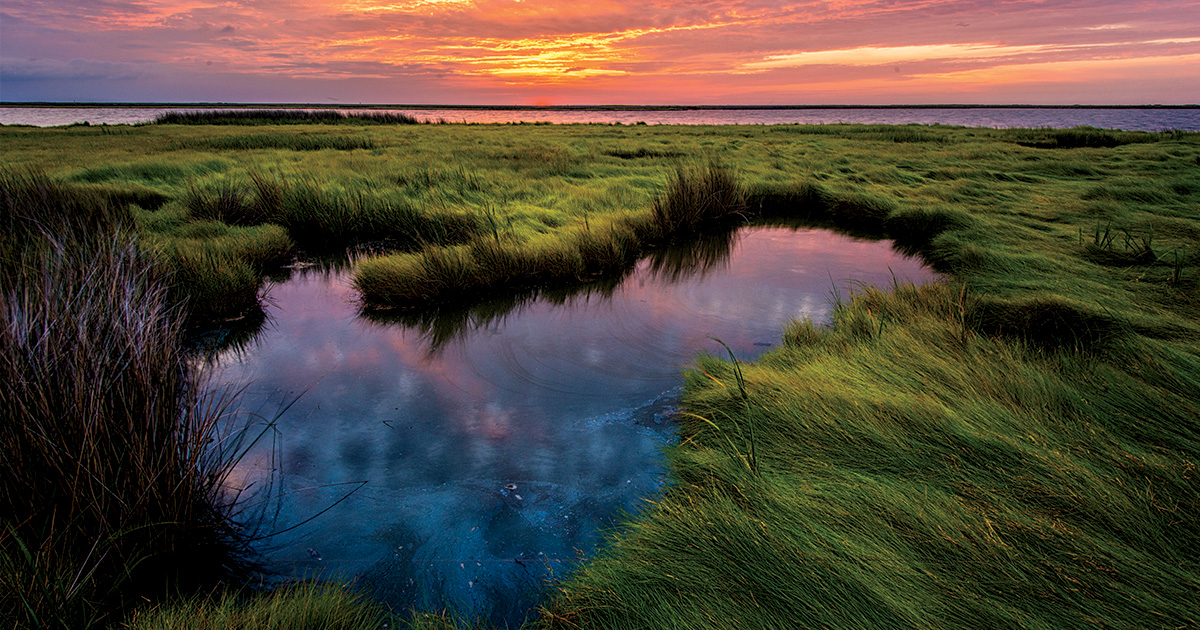
I was lying on my back in Saskatchewan when it first occurred to me that I was saving the planet. The epiphany came on suddenly, with me grimed in muck and trying to disappear in a muddy pea field, but the feeling had been building for days.
Ducks were, to put it bluntly, everywhere. We found them in tiny prairie potholes where every duck that took a look was a duck already in shotgun range. We found them on small lakes and wet corners in barley fields. The morning before, I had been tasked with trying to sort through mixed flocks of diving ducks for the biggest drake redhead I could find—a rare duck in my bag at home. And then, in the afternoon, we had watched ducks stream into a curious boulder-strewn pothole around which a farmer had left a wide strip of cattails and upland grasses.
Now, ducks swirled and corkscrewed over my layout blind, so many that I couldn’t count them. So many that I couldn’t help but wonder how many were hatched and raised in southern Saskatchewan and how many had recently migrated from places as remote and exotic-sounding as the Mackenzie River Delta or the Peace–Athabasca Delta or the Aleutian Islands. And it struck me that it was no accident that they were in the air over my decoys.
The ducks were there, in some measure, because I was there. Some of those ducks overhead might have come from DU properties spread across the province. Some could have come from farms and ranches where DU helps landowners keep upland grasses intact around prairie potholes. Which meant that, as a licensed hunter and a DU member, a little piece of all that wonder in the sky was mine too. I had skin in the game. Just by being there—licensed and camouflaged and with pockets full of shotgun shells—I was playing a part in protecting the health of a world in which those wildlife habitats can exist.
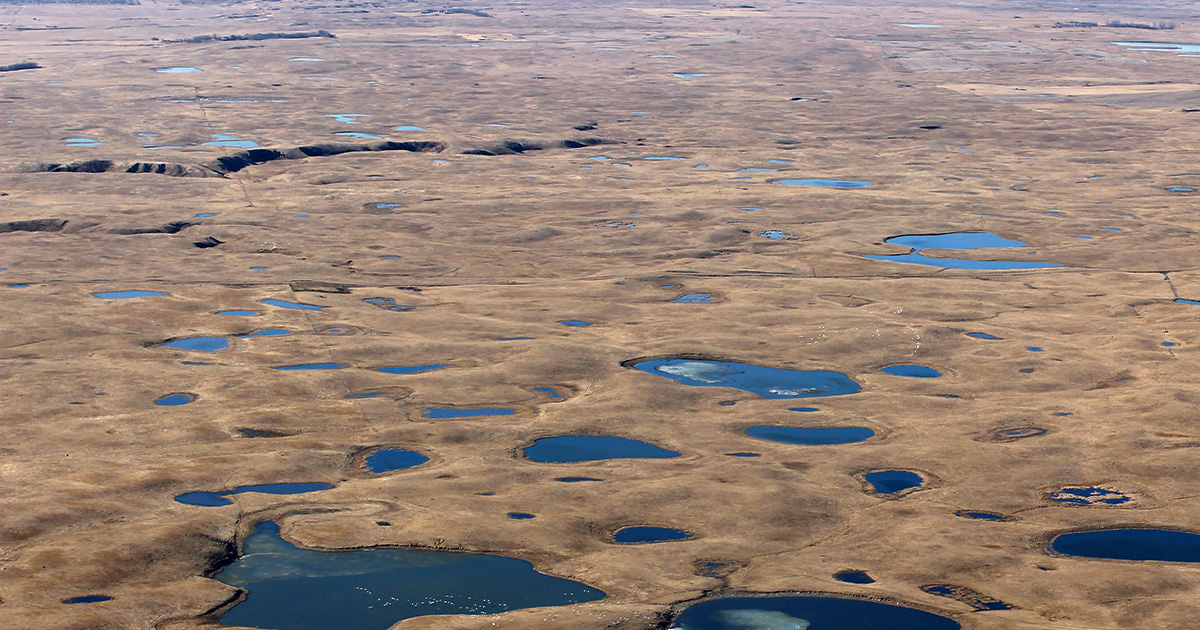
Conservation work funded in large part by waterfowlers is helping to protect some of North America’s most important and most imperiled ecosystems, such as the Prairie Pothole Region.
Ever since that morning in Saskatchewan, when I watched waves and cyclones of mallards, pintails, gadwalls, and wigeon above the decoys, I’ve had a different relationship to my time in a duck blind or camouflaged canoe. I realized back then that simply by being a duck hunter, I was taking part in some of the most impactful conservation work on the planet.
If you don’t ever think that way, maybe you should. Because you are saving the planet too, every time you head to our favorite ducky places.
Most of us are aware that hunters pay much of the tab for conservation. Through license fees, excise taxes that support the Federal Aid in Wildlife Restoration (Pittman-Robertson) Act, and individual contributions to conservation organizations like DU, waterfowlers are a critical source of funding for much of the work that keeps ducks and geese in the sky. But these days, DU leverages those dollars to produce not only local, but continental and even global impacts on conservation.
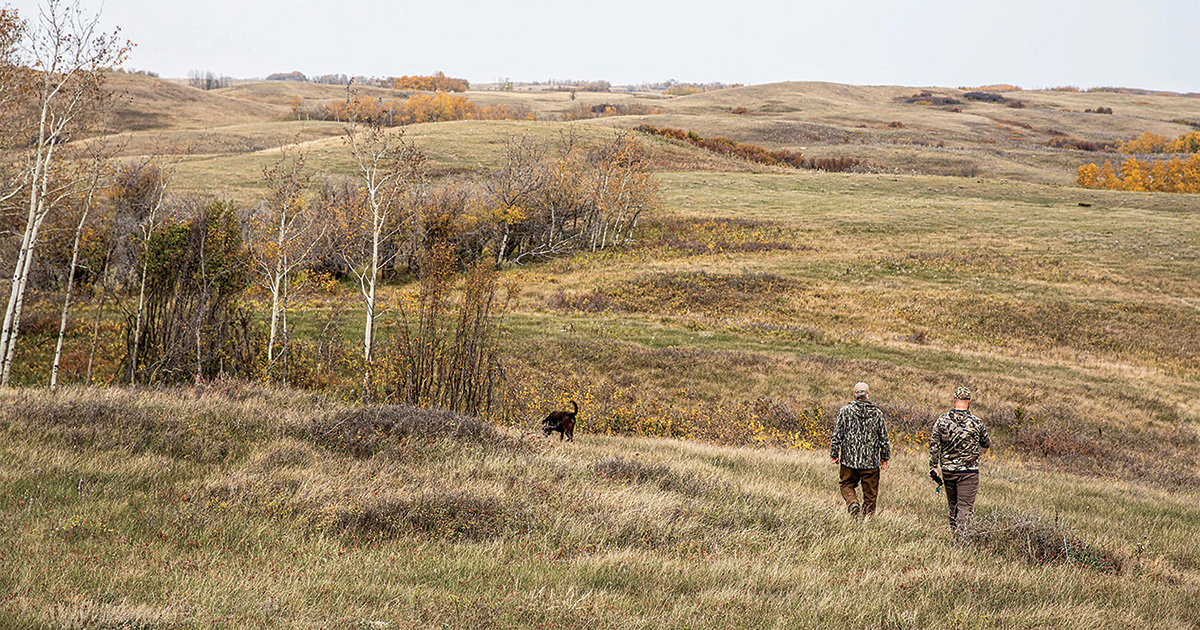
Early experiences in the outdoors inspired many of DU’s scientists to pursue careers in wildlife conservation. Today, their work is making a positive difference for wildlife and people.
For example, through the passage of the Inflation Reduction Act of 2022, opportunities to link projects that reduce greenhouse gas emissions to sustainable agricultural practices that support waterfowl and other wildlife populations have expanded dramatically. And with nearly nine decades of experience delivering on-the-ground ecological solutions, DU is perfectly positioned to leverage its science and engineering know-how and continent-wide network of volunteers and staff to deliver habitat conservation on a scale that would have been unimaginable a few decades ago. And it’s all because rank-and-file waterfowlers have consistently shown up to put their money and time where their passions are.
When it comes to wetlands and waterfowl conservation, “many of us look at the duck outcomes,” says Dr. Ellen Herbert, DU’s ecosystem services scientist. “But it’s pretty unique throughout the world that we have this long-standing mechanism in which hunters are paying for other benefits for society such as clean and abundant water, natural storm protection and flood control, and carbon sequestration on an enormous scale. That’s all a byproduct of a passion for ducks, and it’s not like this everywhere in the world. It’s hard to express how proud we should be of that.”
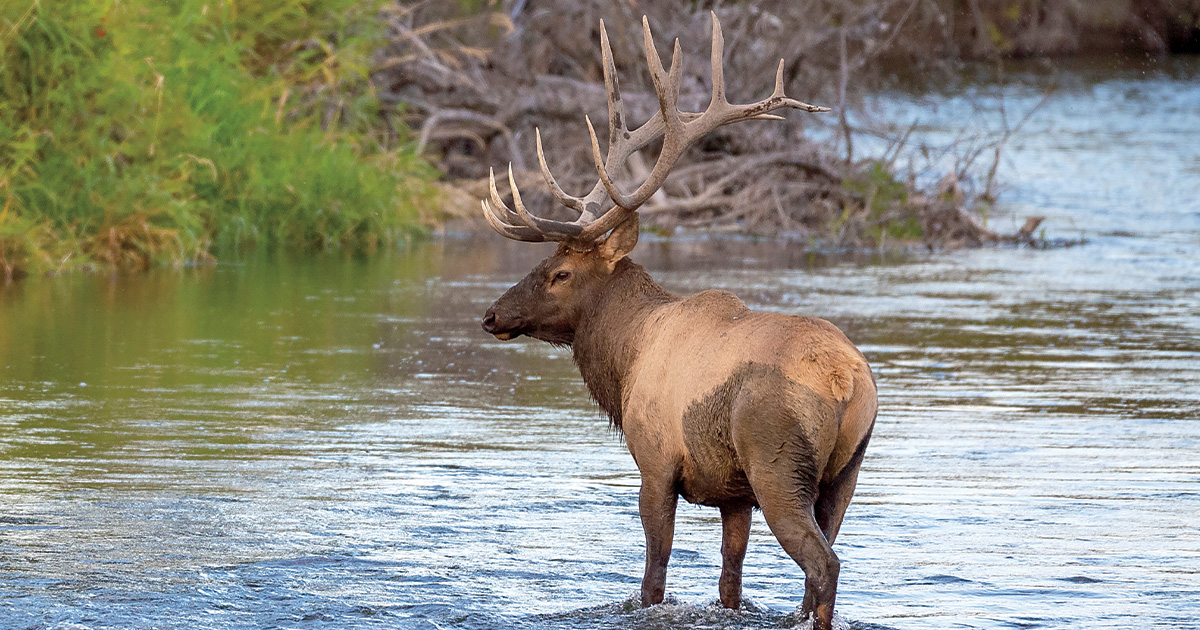
In addition to ducks and geese, a wide variety of wildlife species, from sandhill cranes to elk, benefit from wetlands conserved by DU and its partners across the continent.
Billy Gascoigne remembers one of the first times he came face-to-face with the broader implications of working to conserve wetlands and waterfowl. He and a friend had crafted a decoy hauler out of a couple of mountain bike frames and wheels and had hauled their gear into a remote marsh in the Monte Vista National Wildlife Refuge in the San Luis Valley of south-central Colorado. They had set their decoys in the dark and were making their way back to a stand of cattails when they heard rustling and splashing water.
“We started flashing our lights and yelling, ‘Hey, we’re already here!’” Gascoigne recalls. But it wasn’t another group of hunters causing the ruckus—it was a small group of elk that passed not 25 yards away.
This happened during a drought year, and it struck Gascoigne, standing in the cattails, that the water provided by DU projects or managed by refuge personnel is vital to so many other species. The valley is surrounded by tall peaks, where elk and bighorn sheep live, and its playas and wet meadows provide crucial wetland habitat for ducks, geese, and sandhill cranes—plus mule deer and elk. “As duck hunters, sometimes we can get a little myopic about these habitats,” he says. “We don’t realize that we’re part of a much larger story when we are hauling decoys and looking up at the sky 99 percent of the time.”
For Gascoigne, now DU’s director of agricultural sustainability and strategic partnerships, the experience not only opened his eyes to the broader impacts of wetlands conservation but set him on his career path. “This was right at the beginning of my formal introduction to some of these issues, and I was wrestling with how to broaden my impact in the conservation world,” he recalls.
Today, DU holds 19 conservation easements in the San Luis Valley and is collaborating with local communities, farmers, and ranchers to conserve and manage the area’s precious water resources. “DU is looking for solutions that don’t point fingers,” Gascoigne explains, but provide wetland habitat for wildlife and also help replenish aquifers so water is available when farmers need it during the growing season. “What is needed most urgently right now is what DU has been practicing for decades—delivery of projects that make both an immediate and long-term impact.”
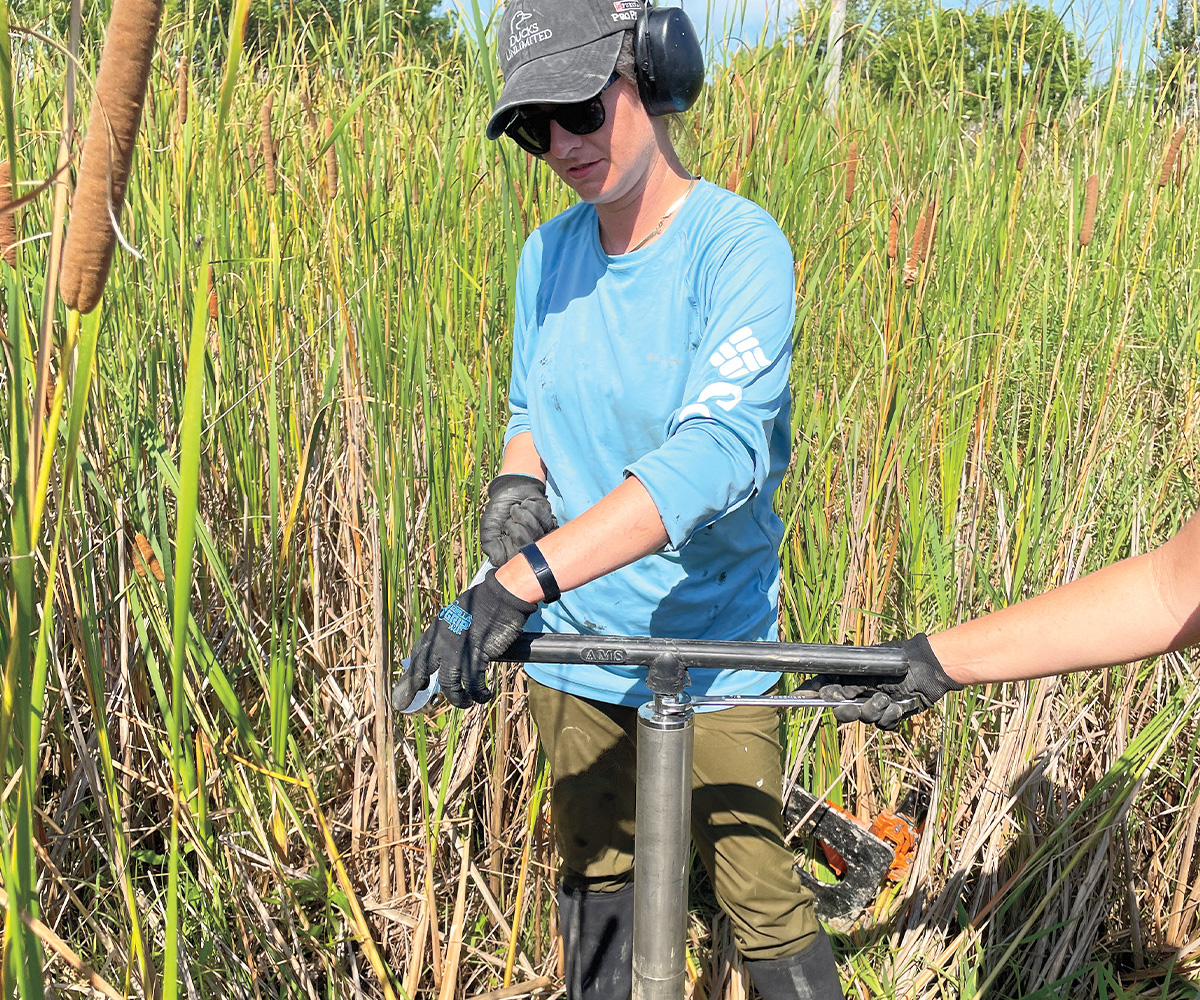
Dr. Herbert is working to quantify the benefits of DU’s work beyond its importance for waterfowl. These “ecosystem services” include clean water, flood protection, carbon sequestration, groundwater recharge, and more.
For Herbert, it was a Girl Scouts field trip through one of the most famous green timber bottomlands in the country that first steered her toward an understanding of how outdoor recreation supports conservation. She was around 10 years old when her troop launched canoes into eastern Arkansas’s Bayou Meto Wildlife Management Area (now known as the George H. Dunklin Jr. Bayou Meto Wildlife Management Area), a 33,800-acre wonderland of soaring bottomland hardwood forest and swamp. And it wasn’t even a hunting trip. “We were all fishing from the canoes, and to tell you the truth, I don’t remember if we caught anything,” Herbert laughs. “But I do remember that we used canned corn and cheap hot dogs for bait.”
And she remembers how the water in Bayou Meto seemed to quiver and shimmer and pulse with life. “It struck me, even as a little girl, to see all the insects that were in the water, and how alive those bottomland forest waters were,” she says. She recalls how quickly a canoe paddle would stir up the sediment, and how swiftly the water would clear as the sediments settled back to the bottom. “Even then I made the connection to how clean the water was in those intact forest systems. That sense of stillness still appeals to me. I love that quietness when you’re sitting in the woods in the in-between times, when you can sense how a marsh or a river or a creek is literally cleaning the water all around you.”
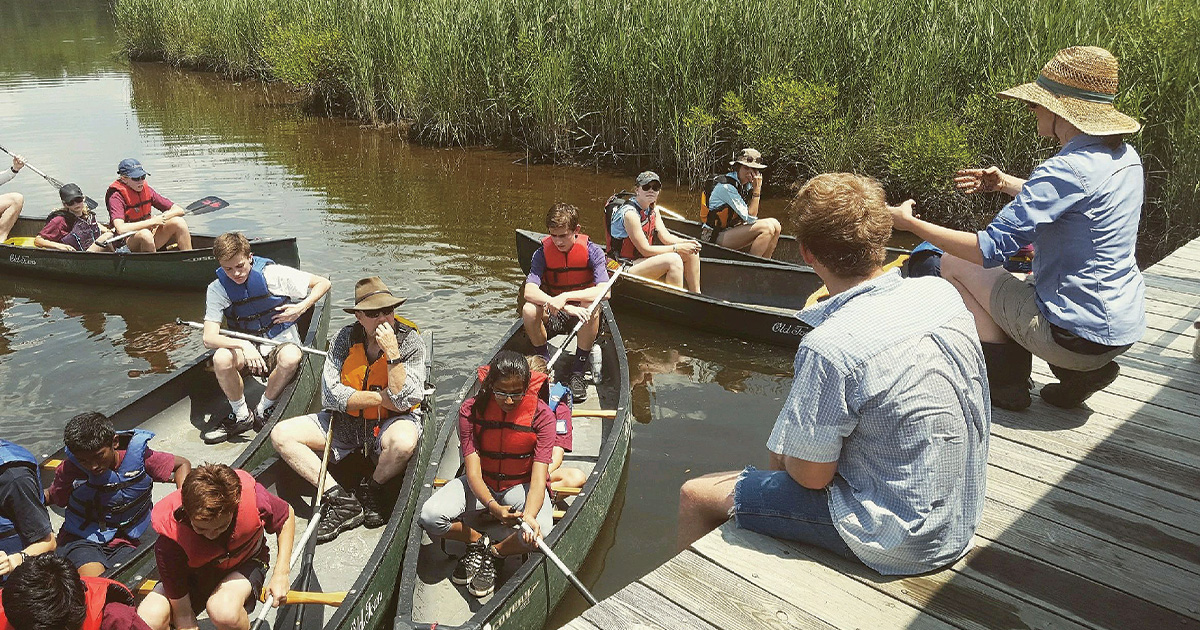
Herbert would go on from paddling a rental canoe to working for DU and trying to quantify the variety of environmental benefits that the organization’s work provides, and her sense of being involved in broad conservation measures, even if unwittingly, has only deepened. DU’s efforts in formal carbon offset programs allow entities as varied as soft drink companies and concert promoters to purchase credits that are offset by conservation programs in habitats such as bottomland hardwood forests. “Hardwood bottomlands store a lot of carbon,” Herbert says. The trees remove carbon dioxide from the air and store it as biomass in limbs, roots, and trunks. On the forest floor, carbon is stored in leaf litter and soil.
Being able to study and measure what she knew intuitively as a kid with a canoe paddle in hand makes every moment she now spends outdoors all the more rewarding. When she’s knee-deep in a flooded bottomland hardwood forest, there’s no escaping the feeling that whatever she can do to keep those habitats intact does more than help mallards. “You look around at the size of some of those trees and think about how old they must be,” Herbert says. “Although it’s rarely thought of in these terms, producing duck food is an ecosystem service. Big, healthy trees produce a lot of acorns, and the more duck food they are producing, the more carbon they are storing. The outcomes for society at large are equally robust and important—to communities, to the economy, and to public health.”
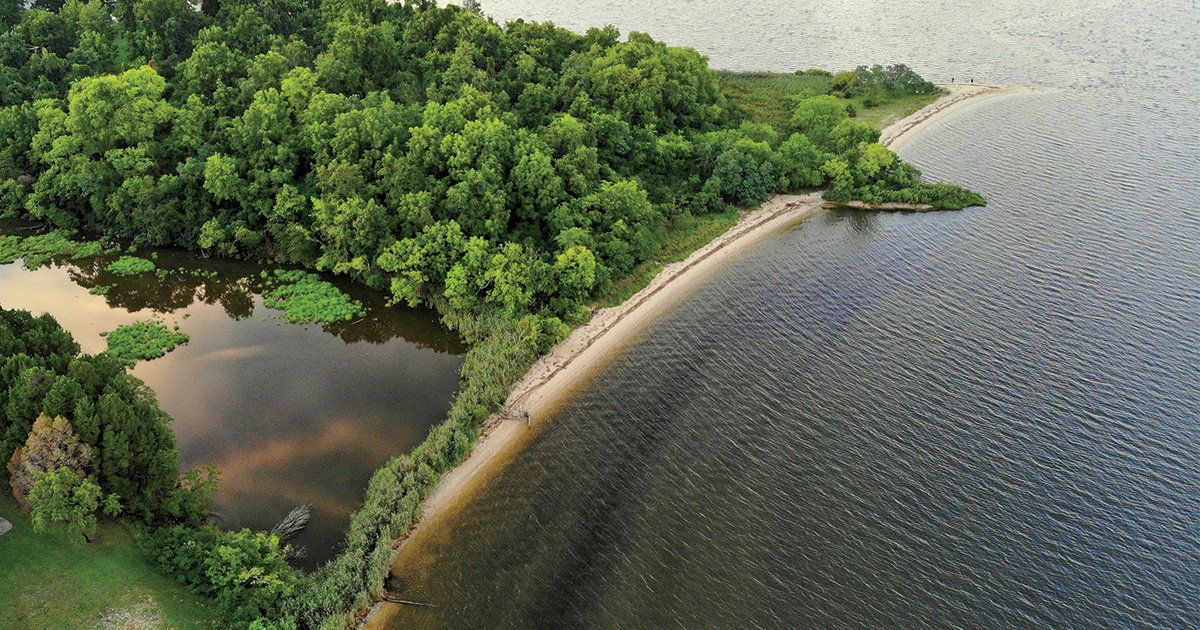
Sea-level rise is threatening traditional wetland systems in the Chesapeake Bay region. Some projects in this area are identifying and protecting land that will be important for waterfowl when existing habitats disappear.
Part of the challenge with recognizing waterfowlers’ contributions to a healthy planet is that their full effects often aren’t evident until years in the future. But some of the challenges brought about by a warming climate can be right in your face. Dr. Steve Adair, DU’s chief scientist, remembers vividly when the nature of a changing environment literally stopped him in his tracks. He’d spent the morning hunting Canada geese in the sprawling cornfields along Maryland’s Eastern Shore. Goose hunting in the region has its own unique charms. It is steeped in history and heritage, Adair explains, as he recalls gunning Atlantic Flyway migrants from field blinds using mounted full-body decoys that locals call “stuffers.”
But in the afternoon, it was the future, not the past, that Adair had to reckon with. “We were touring the area after the hunt,” he recalls, “and driving through the landscape around Virginia’s Back Bay National Wildlife Refuge.” With barrier islands fronting the Atlantic coast and vast salt marsh bordering inland shores, the area is imperiled by sea-level rise. Higher waters degrade the marsh, converting it to open water. Wind and wave action worsen the problems as more marsh crumbles. “We drove down a county road that simply ended in the water. The rising bay had overtopped the road and it was impassable. It was literally a dead end at the shore of the bay. And it wasn’t a storm event; it was sea-level rise and marsh subsidence all coming together right there in front of me.”
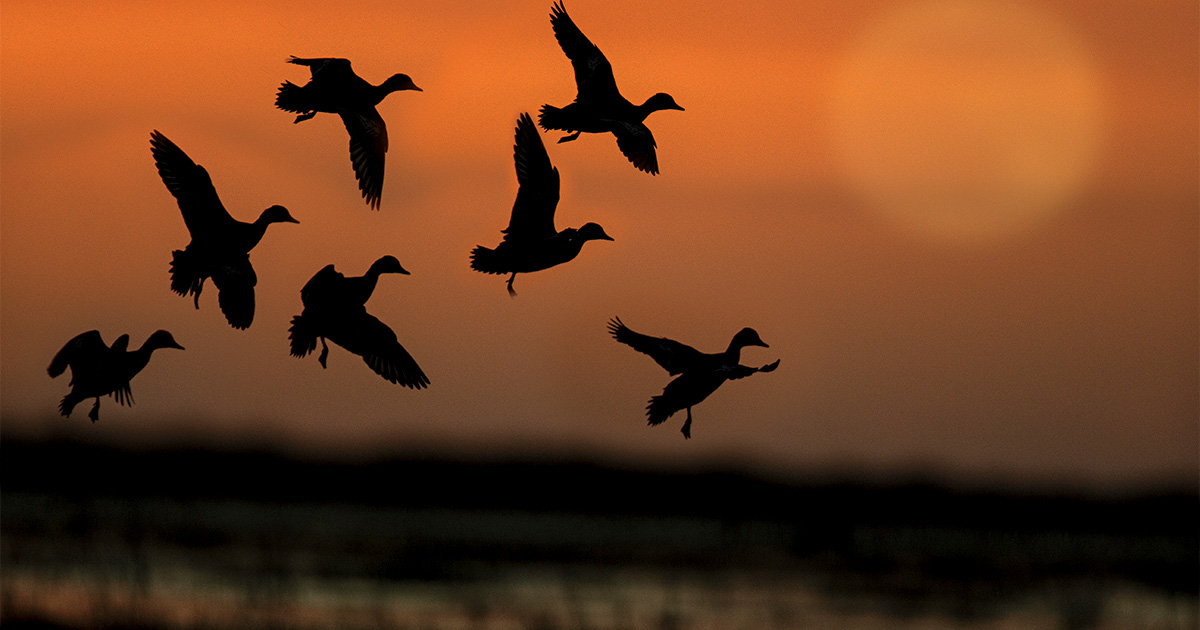
Adair was stunned. “That was a profound experience for me,” he says. “I realized that we are not going to be able to hold the waters back. Instead, we have to make room for rising waters by planning smart today.”
What that might look like is exactly what DU is working toward in the Chesapeake Bay region. Using a $1 million grant from the North American Wetlands Conservation Act and another $2 million in matching funds from major donors such as the James M. Cox Foundation, DU and its partners are working to protect half of the Delmarva Peninsula from urban development by 2030. More than a half-dozen different projects are already in the works, including conservation easements protecting the Delaware River shoreline and an intriguing undertaking near the Choptank River, where an inland expanse of uplands is being protected in order to give marshes a place to migrate as sea-level rise pushes wetlands inland. Marshes can’t migrate into cities and subdivisions, so setting aside land now for the wetlands of tomorrow is a new and forward-thinking strategy. And a little piece of every duck stamp and shotgun shell purchase goes toward supporting the effort.
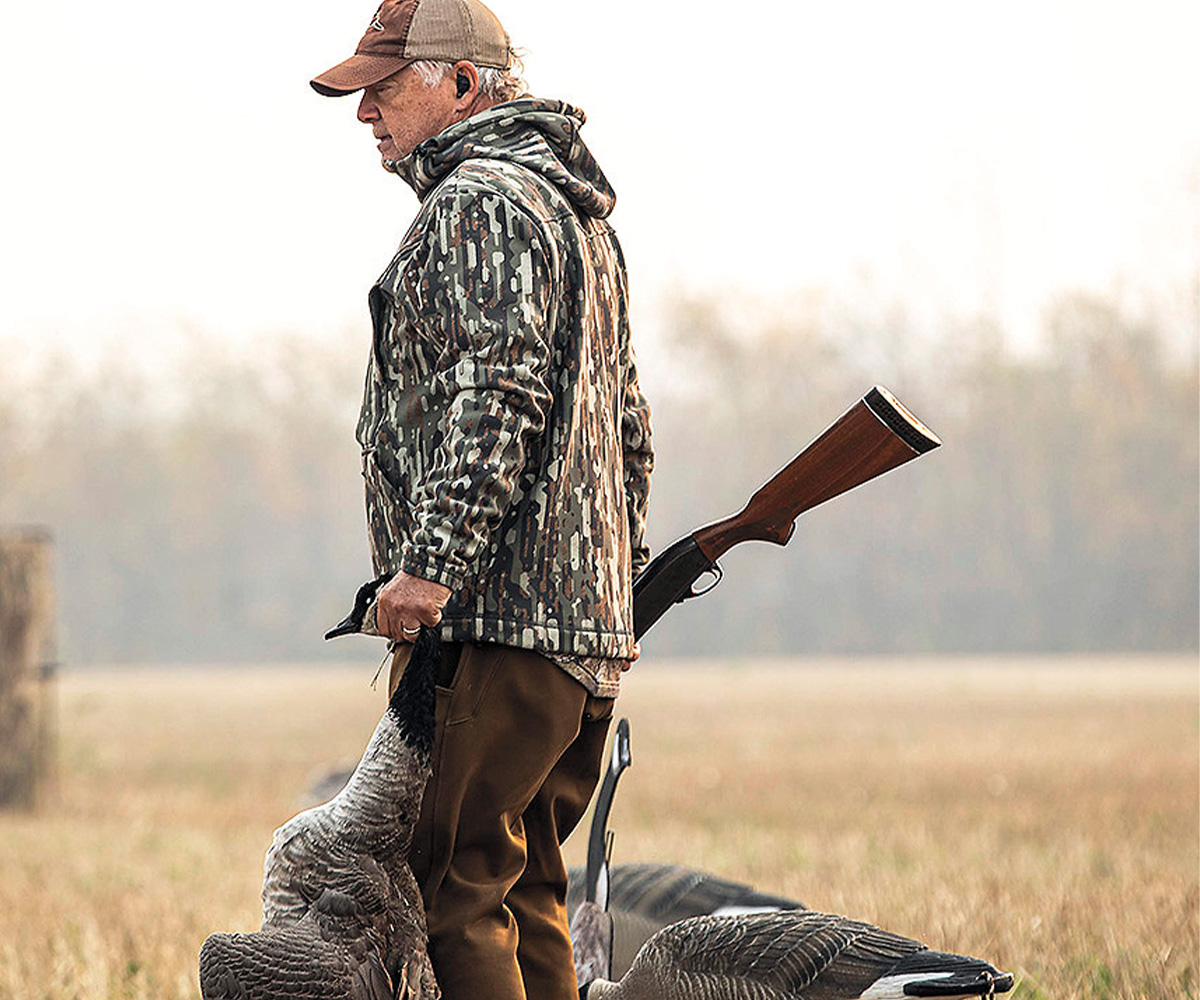
Tucked away in my Saskatchewan mud spa, it was tempting to think of myself as disconnected and free, a sojourner with a shotgun and few bonds to the world at large—at least for a week. In fact, I realized that in that moment I was more deeply tied to the natural rhythms of the planet than in nearly any other aspect of my life. A duck stamp here, a shotgun purchase there, an annual gift to conservation work along the way—my lifelong pursuit of waterfowl is having a long-term effect on ecosystem health far beyond my footprint. Or wader-boot print, as it were. I’m hopeful that more duck and goose hunters will recognize their impacts. That could lead to waterfowlers doing even more.
“Most duck hunters do what we can to protect and manage our favorite places that we hunt time after time,” Adair says. “But it’s really our collective impact that enables waterfowl to be resilient and persist through droughts and deluges and climate change. None of us can do it alone, but when you sum us all up, we are having a profound, positive impact on the continent and the Earth.”
Ducks Unlimited uses cookies to enhance your browsing experience, optimize site functionality, analyze traffic, and deliver personalized advertising through third parties. By continuing to use this site, you agree to our use of cookies. View Privacy Policy